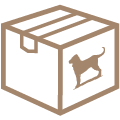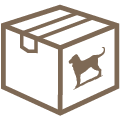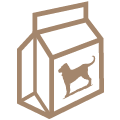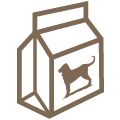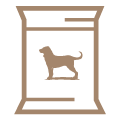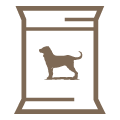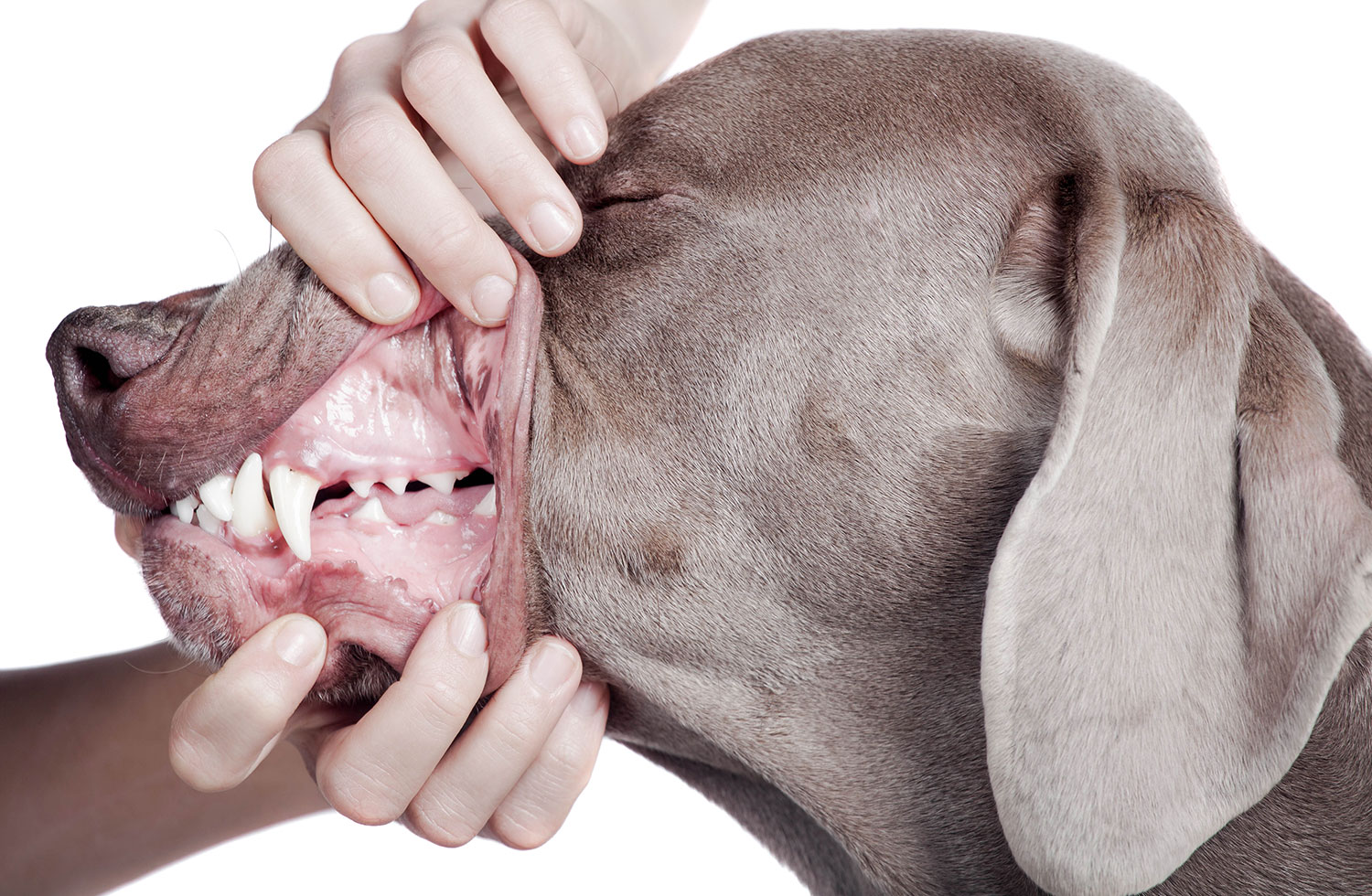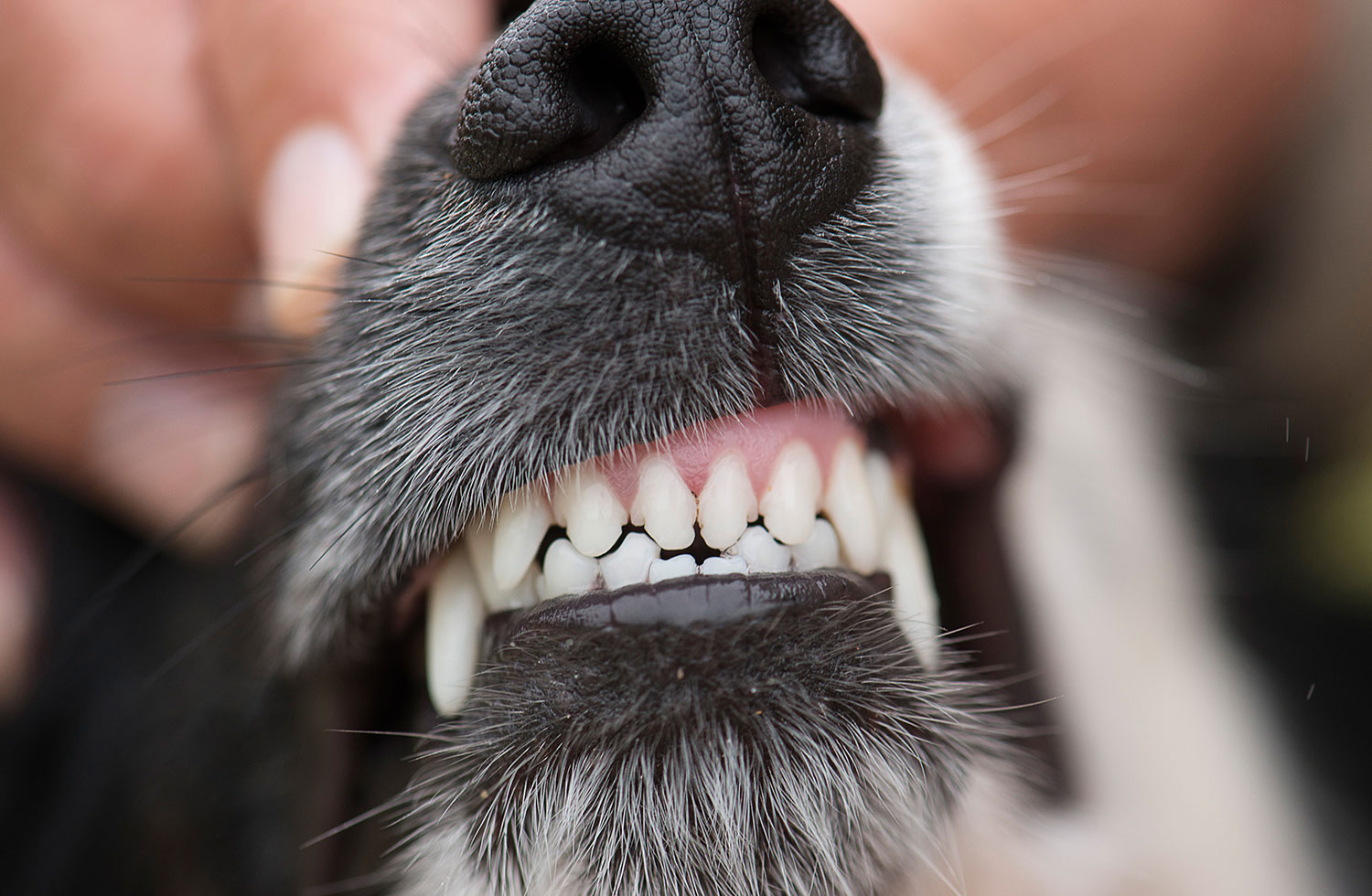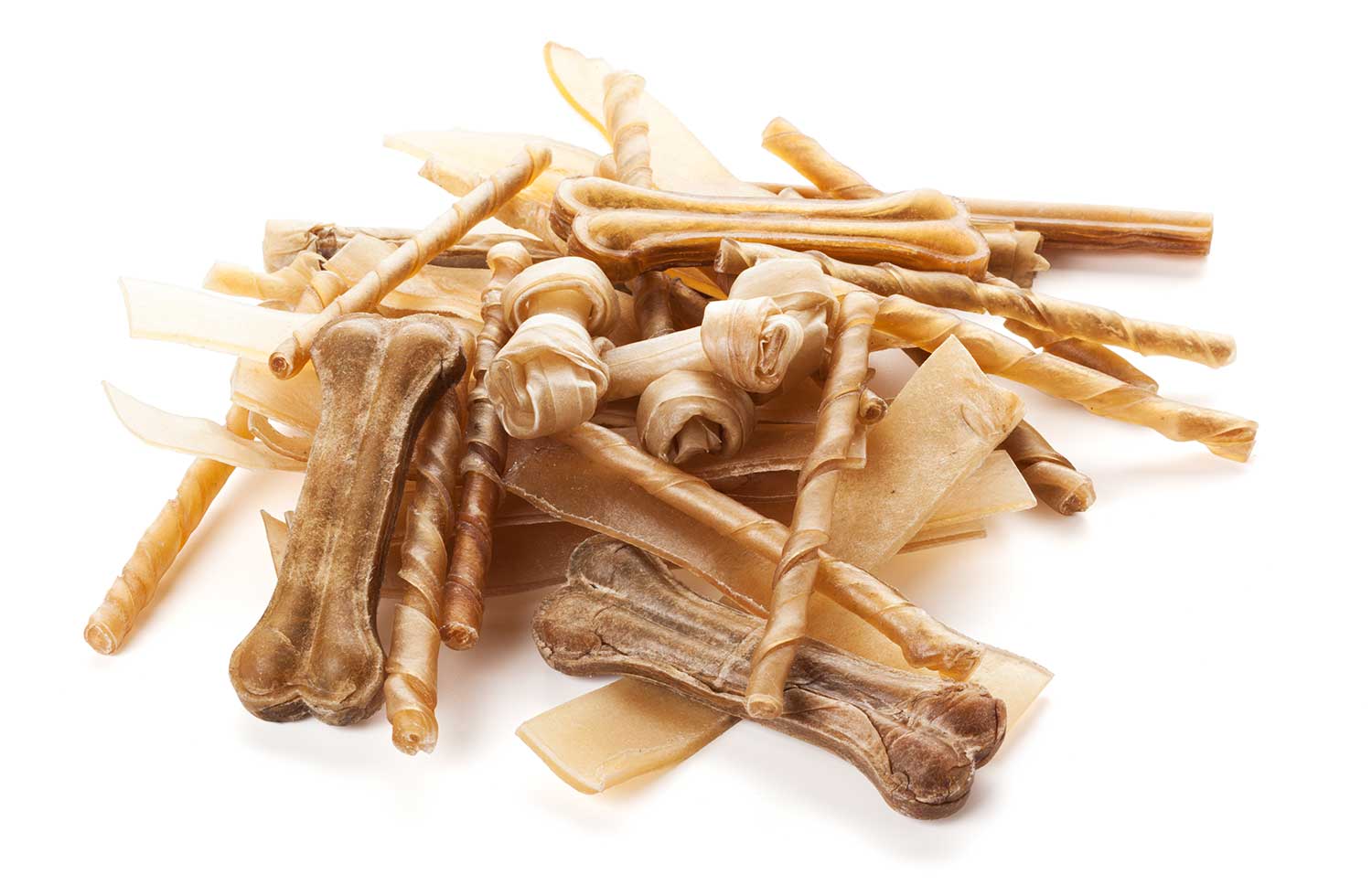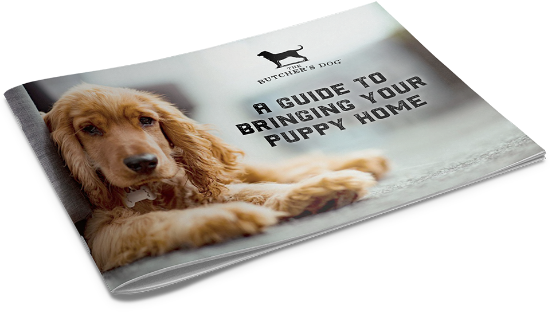Bones and Dental Health
Why has the incidence of dental disease skyrocketed?
So why is it then, that up to 80% of dogs over the age of two years old (veritable babies!) have dental disease? And 70% of cats! Modern processed dry diets have played a huge part. The sticky film called plaque forms on teeth when bacteria in the mouth mix with starchy foods. This build-up is something we don’t tend to see in raw-fed dogs and cats. Partly because raw food doesn’t contain starches and sugars, and the mechanical scraping of the teeth when bones are gnawed. It also needs to be remembered that dog dentistry is a relatively modern phenomenon and is not without risk itself, as your dog is under anaesthetic for the procedure.
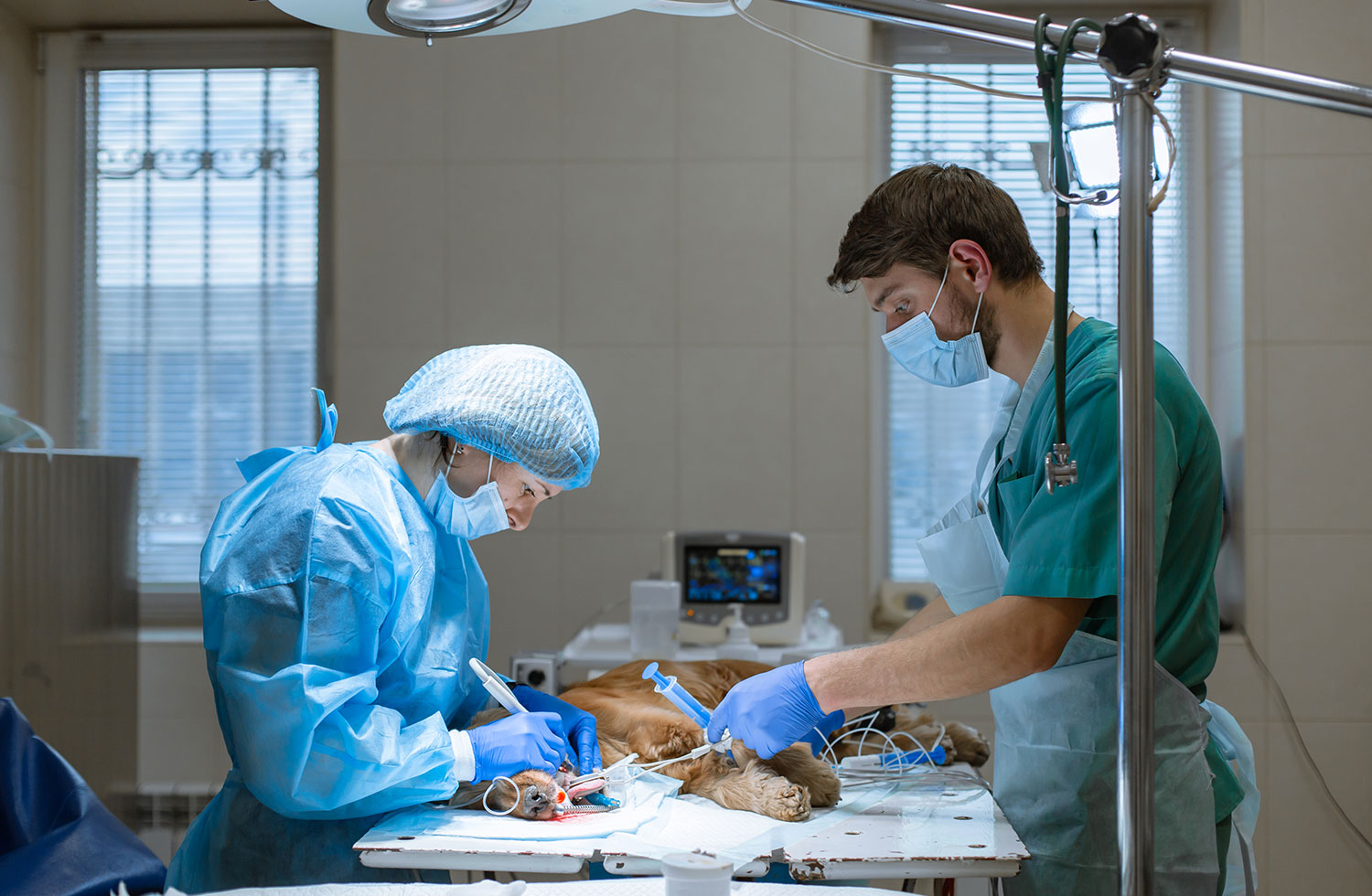
In recent years there has been an outpouring of doomsday messaging about the dangers of bones and how we simply must not feed them under any circumstances. Cracked teeth, choking hazards and splinters! The risks so greatly outweighs the benefits that we simply must not facilitate an act that our pets evolved over thousands of years doing, but instead feed these certified synthetic starch sticks and routinely spend hundreds, if not thousands of our hard earned dollars on teeth cleaning procedures.
The black and whiteness of the differing schools of thought within the animal care industry is something I have always struggled with. Bones in particular seem to divide, and I dare say that no one suffers more from this argument than our pets.
The risks of feeding bones
There are risks to feeding bones. If we feed inappropriately large and hard bones, it’s possible that a tooth may crack. A dog could choke on a bone (like literally any other thing they chew like sticks and balls ) and cooked bones can splinter. These are all genuine risks and it would be irresponsible not to acknowledge them. But they are risks that can be mitigated, and they should be weighed up against the benefits. But there are also other health risks to consider.
The risks of not feeding bones
The statistic that 80% of dogs over the age of 2 (or 3, according to some sources – but shocking nonetheless either way) require dental treatment is so widely circulated in both pro and anti-bone circles that it can not be ignored. In fact there are a number of peer reviewed studies that support it. This is extremely troubling, not only because it is a condition that inevitably causes a life of pain, but perhaps even more worryingly because it is linked to the progression of “renal, hepatic and cardiac disorders,” a claim that is supported by a study conducted at Purdue University, which concluded “systemic diseases where an association with [periodontal disease] has been documented include chronic bronchitis, pulmonary fibrosis, endocarditis, interstitial nephritis, glomerulonephritis, and hepatitis.”
Dental disease causes systemic disease.
This is the risk we simply cannot ignore. While the scientific evidence of the dental health benefits of gnawing on a bone are unsurprisingly scant, there is literally thousands of years of lived experience, and an infinite mass of anecdotal evidence supporting bones as a natural method of ensuring the dental health of species that are physically designed to eat bones. There is also evidence to support the preventative nature of natural chews like cow hooves on periodontal disease in dogs, a conclusion that is drawn form the same study referenced above, implicating dental diseases in a host of other systemic illnesses.
I will add to this and say that my nine year old dog has eaten meaty and recreational bones his whole life and has shown no signs of dental disease or cracked teeth at his routine vet check ups – performed by his raw feeding vet who also feeds her own dogs bones! My one year old monster, however, has a cracked tooth from jumping into a sewer when she was a puppy, and her (human) dad has an endearing chip in his front tooth from an incident with a basketball. Life is full of risks, and as guardians it is our responsibility to weigh them and choose a path that we believe offers the best possible health outcome for those in our care. If you decide this is not bones, then that is more than ok. If you think they are worth a crack (no pun intended), then there are a few things to keep in mind in order to ensure they are fed safely.
Pick a dog a Bone
The first thing is to select which kind of bones you want to feed. There are two main types: meaty and recreational. Meaty bones are nutritional and consumed entirely as part of the main diet, and include things like a chicken neck or wing. They offer many health benefits in addition to dental, such as a naturally balanced source of calcium and phosphorus, when fed as part of a complete diet. The other is a recreational bone, which is the more traditional “dog bone” and is offered usually as an enrichment tool. When we say “give a dog a bone” we think of this type, well-utilised to both keep busy minds at bay and pearly whites sparkling.
Size Matters
In each situation it is wise to err on the side of larger, as this means they are unlikely to be swallowed whole and pose a choking hazard. In any case, it’s essential that you get to know your own dog, monitor their chewing style and work out if you need to first teach them how to safely consume bones. Some dogs will carefully crunch and gnaw until the bone has been reduced to a size suitable to safely swallow, whereas others will attempt to swallow everything in sight immediately. I personally have one of each. For the more gung-ho, it’s important that you guide your dog and teach them how to consume bones safely. Hold it in your hand and force them to gnaw.
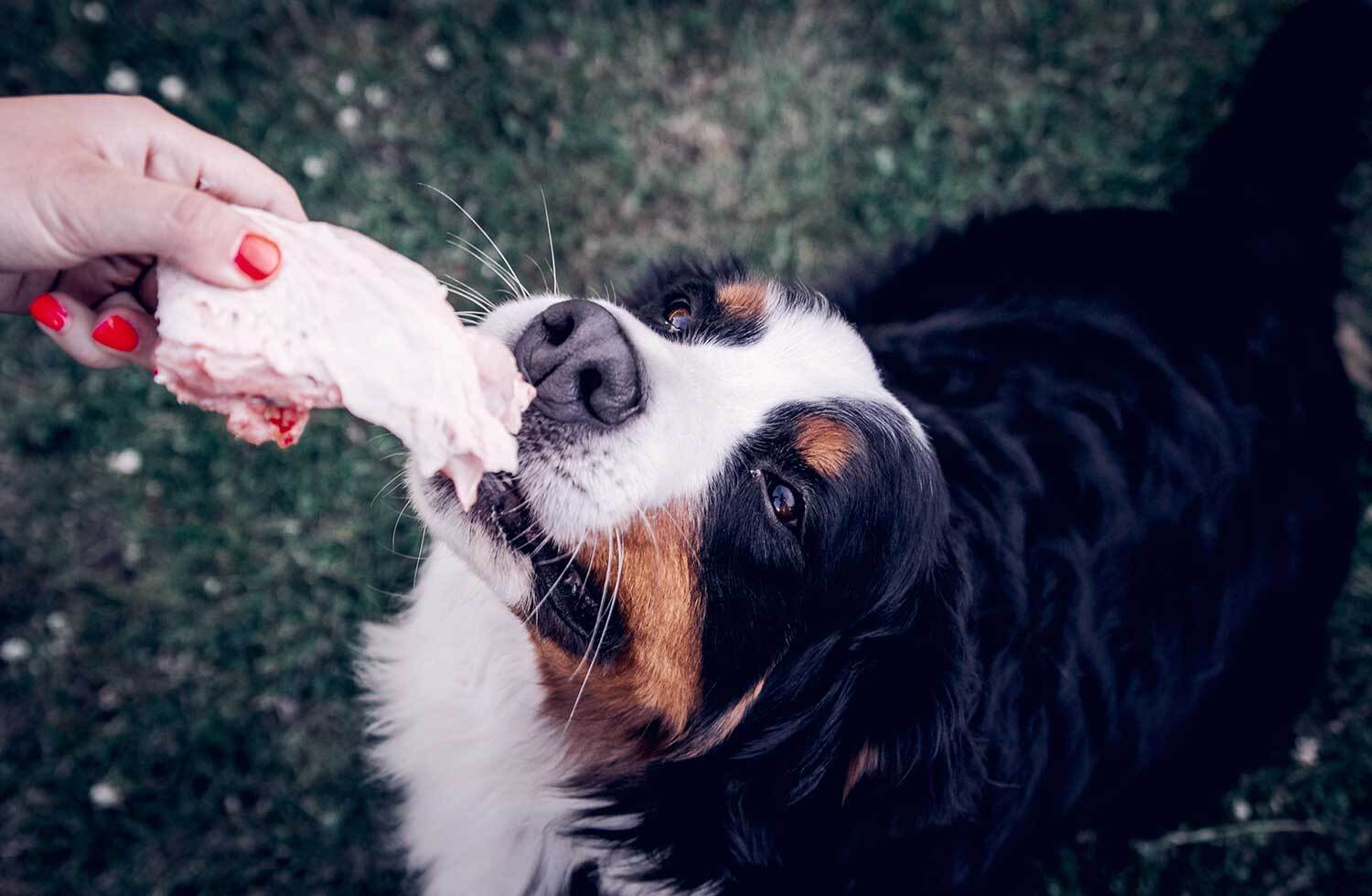
Avoid competition at meal time
Feed them alone so there is no competition or urgency. You can try giving them more than they can physically swallow and allow them to consume some, then take it away when they’ve had enough and before it gets too small. In the case of very large dogs, if you trust your dog and feel comfortable to (as I do), you can actually feed small bones like chicken necks, and they will likely be swallowed with almost no chewing at all (as the dog is really designed to do), and they will at least obtain nutritional benefit, if not dental. Most importantly, always supervise.
Selecting the right bones also extends to the animal the bone comes from. If a bone is very, very hard—such as those that weigh bear for very large animals (eg. cow legs), it is significantly more likely to crack a tooth. If a bone is very hard but small (such as a beef short rib), it can be swallowed whole but not digested, or it may get stuck in the roof of the mouth or in the digestive tract. For this reason it is best to choose physically larger bones but that are not from huge animals. Bones from a turkey or a lamb, or bones that don’t carry a lot of weight, such as a neck from a pig or a tail from a kangaroo, are good examples of much safer choices.
No, never, nada.
And most importantly, never ever ever EVER feed cooked bones of any description. While most raw bones are actually quite soft and spongy and can be safely digested by the gastric juices of healthy dogs and cats, cooked bones are dried out and hard, and therefore are much more likely to splinter, causing the injuries we’re quite rightly warned about.
Also stay away from synthetic bone substitutes such as raw hides ( toxic chemicals used in the manufacturing process ) brightly coloured green chews (full of dyes and synthetic ingredients) deer antlers ( responsible for a lot of broken teeth in vigorous chewers), basted, smoked and decoratively tinted products, (full of crap).




